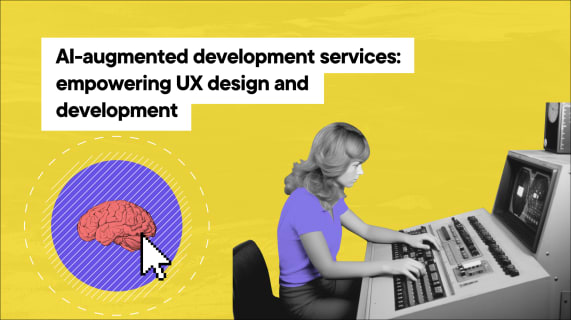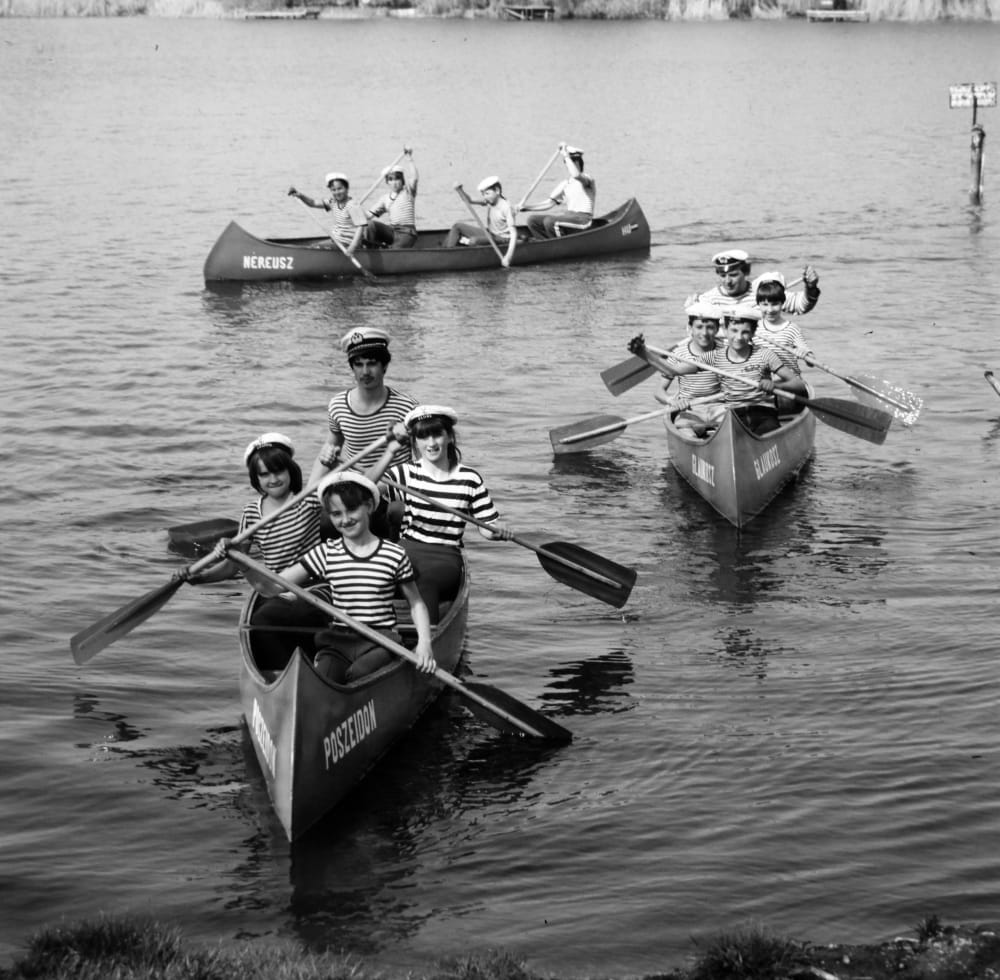AI - Tool of possibilities: From simple rhymes to a revolution in daily work
Hello, my name is Joanna Sanetra and I am a Product Designer at Boldare. I would like to share with you what I have learned during a four-week AI Designer course organized by Design Practice and led by Grzegorz Rog. The results of my work were presented at DevCamp (an event bringing together all Boldare employees) in June 2025. Although the course’s name may suggest it is dedicated only to designers, its scope was so broad that I recommend it to anyone working on computers on a daily basis.

Table of contents
The beginning – birthday wishes for my sister and the first disappointments
My AI adventure began prosaically – writing birthday wishes for my sister. In 2023, I asked ChatGPT: “Write a funny and rhyming poem for Aleksandra’s birthday, who lives with her dog Pawełek and her handsome boyfriend Szymon in the city of Łódź, where there are many holes in the roads.”
The result? Chat turned out to be terrible at creating rhymes, making up words and their contexts. The first conclusion was clear: AI does not replace creativity, but supports it. It is a helpful sparring partner that, however, lacks skills in some areas. So why, since the first attempts were poor, did I decide to delve deeper into the topic? Because I did not want to stay behind, and I wanted to learn how to support my daily work with AI tools as quickly as possible.
Typical concerns I had to face with:
- “AI is just ChatGPT” – lack of awareness of other tools
- “I will stay behind” – fear of technology development pace
- “First results were poor” – giving up after failed attempts
- “It is only for programmers” – myth about its complexity
Discovering tools – more than ChatGPT
The course made me realize the variety of available tools. In the chat category, I discovered Claude by Anthropic – my favorite one with a more natural “vibe” and better at long text handling. Perplexity proved to be an excellent researcher with Internet access, providing the latest data with the references. Gemini surprised me with Google services integration.
In the visual AI area, I discovered Midjourney – the king of image generation with the best artistic results, DALL-E 3 integrated with ChatGPT, or Sora by OpenAI for video generation with Remix and Storyboard options.
The real revelation were the tools for creating websites: Relume for building websites based on sitemaps, Figma AI generating landing pages from scratch, v0.dev creating React components in minutes, or Uizard transforming hand-drawn sketches into clickable prototypes.
Together with another course participant - Andy, we explored the possibilities of using artificial intelligence for website generation and created a presentation called: “Web development in the AI era: from Figma to a ready website“ We focused on combining tools to achieve the best results, such as Relume + Figma + Cursor (RCP), or Figma + Framer.

Practical use of the mentioned tools
During DevCamp, we created together a video in 10 minutes:
- Together we came up with a topic - Forest game
- Claude generated a prompt for Midjourney about the outdoor game
- Midjourney created an image of a group of people running in the forest
- Claude prepared a prompt for KillingAI based on the image
- KillingAI generated the final video
To prepare this demo, we used three tools: Claude, Midjourney, and KillingAI. As Midjourney introduced animation generation functionality recently, we could limit tools just to Claude and Midjourney.
Automation - only for programmers?
Another myth is: It is only for programmers. I will raise the bar and prove AI is also useful in the automation field.
The below flow was also prepared as a part of the course. In everyday work I provide services for an Arabic client - the portal needs to be in the Arabic language. We have been struggling with long delays in receiving Arabic translations for many years. A chatbot that encourages our product owner twice a week to check the file and add translations was introduced some time ago. However, notifications are sent regardless whether we have added any new texts or not. My proposal was to create a new automated task that checks daily whether any new records have been added. If yes, OpenAI generates Arabic translations and sends an email to the Product Owner informing them that the proposed texts and translations need to be verified. The file contains a check column that the PO marks if everything is correct. If corrections are needed, they make them by themselves or add a comment. Automation was prepared using Make app.
Another example: Imagine a situation where we need to publish some materials on social media every two weeks. While we can barely find any people willing to write content, we have absolutely no space for generating consistent graphics. My proposal includes automation using Airtable and Make.
Process designed in Make:
- Triggering condition: a new row is added in the Airtable spreadsheet
- AI generates post description based on the entered title
- AI creates branding graphics
- Automatic publication on platforms
My personal assistants
The last topic covered at the course was creating our own assistants using tools like Alice or GPT. Each assistant is like a very good intern: they do repetitive tasks, need clear instructions, sometimes make mistakes, but 90% is done correctly and work 24/7 almost for free.
Ava – Assistant specializing in creating assistants, equipped with instructions for building system prompts.
Leo – Critic with knowledge in product strategy and design. Not afraid to question ideas and propose other solutions.
Samir – Helps in building system messages for Arabic services, equipped with glossaries of nomenclatures known to our users.
WanderWise – Specialist in planning budget travels focused on hiking and mountains.
Basic principles of building assistants:
- Specify the assistant’s role and specialization area
- Define the assistant’s goal
- Determine the response form and structure
- You can refer to additional materials (e.g., glossary of terms)

Key Conclusions
- AI is a tool, not a threat. Small steps lead to big changes – at first, you will use chat more consciously, then you will start generating images. Finally, you will enter the world of automation and creating your own assistants.
- Experimentation is key. Anyone can start now. You do not need to know all the tools – find 3-4 that fit your work. Do not be afraid to test and explore different approaches and solutions.
- Remember: AI will not replace you, but a person using AI might replace someone who does not use it!
If this article sparked your curiosity, I recommend following Design Practice and Grzegorz Rog – the organizers of the AI Designer course, which gave me solid foundations for further AI adventures.
Share this article:






